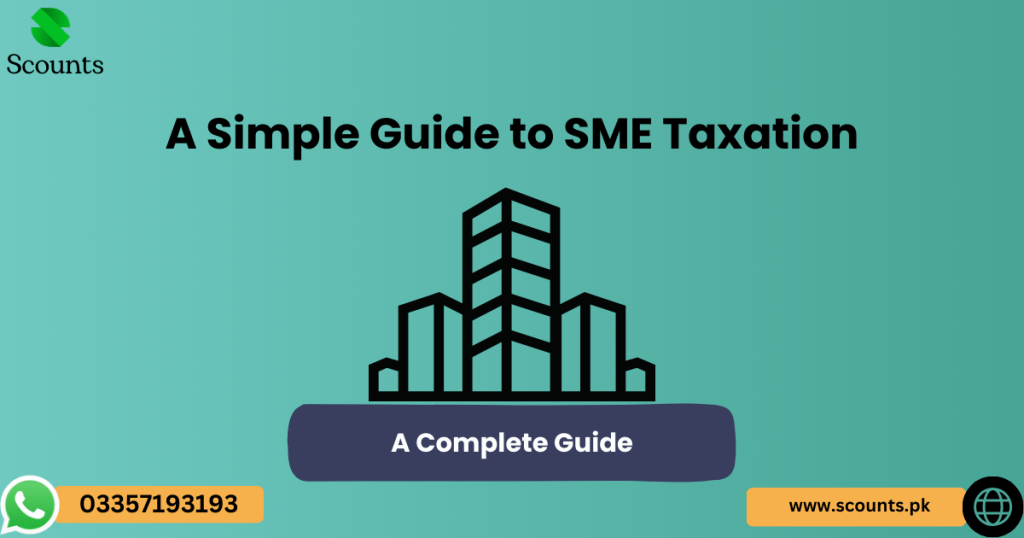
Concept of Small and medium enterprise
“Small and medium enterprise” – sub-section 59A of section 2 – means a person who is engaged in manufacturing as defined in clause (iv) of sub-section (7) of section 153 of the Ordinance and his business turnover in a tax year does not exceed 800 hundred million rupees before it was 250 million:
Sub-section 7 of section 153:-
(iv) “Manufacturer” means a person who is engaged in production or manufacturing of goods, which includes—
a. any process in which an article singly or in combination with other articles, material, components, is either converted into another distinct article or product is so changed, transferred, or reshaped that it becomes capable of being put to use differently or distinctly; or enterprises as defined in section 2(59A).
b. a process of assembling, mixing, cutting or preparation of goods in any other manner;
Finance Bill 2023 proposed to enhance the limit of business turnover to eight hundred million and includes a person engaged in providing or rendering IT services or IT-enabled services as defined under clauses 30AD and 30 AE of section 2 of the Income Tax Ordinance 2001 (Which were not entertained).
How to Register an SME?

Small and medium enterprises shall be required to register with FBR on its Iris web portal or Small and Medium Enterprises Development Authority on its SME registration portal (SMERP), while SME engaged in IT services or IT-enabled services shall be required to be registered with and duly certified by the Pakistan Software Export Board, in addition to registration on SMERP.
Tax Rates for SME’s
Tax Rates under NTR Option
Taxation under Normal Tax Regime (NTR) will be as follows:
| Category | Turnover | Rates |
| Category-1 | Where annual business turnover does not exceed Rupees 100 million | 7.5% of taxable income |
| Category-2 | Where annual turnover exceeds Rupees100 Million but does not exceed Rupees250 million | 15% of taxable income |
Tax Rates under FTR Option
SMEs may opt for Final Tax Regime (FTR) and taxation will be as under:
| Category | Turnover | Existing |
| Category-1 | Where annual business turnover does not exceed Rupees 100 million | 0.25% of gross turnover |
| Category-2 | Where annual turnover exceeds Rupees 100 Million but does not exceed Rupees 250 million | 0.5%of gross turnover |
[Option for FTR shall be exercised at the time of filing of return of income and option once exercised shall be irrevocable for three tax years. Provisions related to audit shall not apply to SME who opts for FTR.]

Related General Questions?
Tax Audit Requirements for SMEs?
SMEs who does not opt for FTR may be selected for tax audit through a risk-based parametric computer ballot under section 214C of the Ordinance if its tax-to-turnover ratio is below the tax rates provided above.
The cases selected for audit shall not exceed 5% of the total population of SMEs whose tax-to-turnover ratio is below the tax rates provided above.
Export Proceeds: – Export proceeds of SMEs shall be subject to tax as per rates in provided above under FTR option.
Applicability of Minimum or Turnover Tax under section 113 of ITO, 2001: Minimum or Turnover as per section 113 of Income Tax Ordinance, 2001 is not applicable to SMEs.
Tax on Supply of Goods: The tax deductible under section 153(1)(a) shall not be minimum tax where payments are received on the supply of goods by SMEs.
Relevant Tax laws in respect of the above:
Definition: Sub-section 59A of section 2 of Income Tax Ordinance, 2001.
Exemption: Section 100E of Income tax Ordinance, 2001.
Tax chargeability Rules: 14th Schedule of Income Tax Ordinance, 2001.
Explore our scounts.pk website for expert tax services tailored for Small & Medium Enterprises (SMEs) in Pakistan. Simplify your tax obligations with our user-friendly platform and professional assistance.
